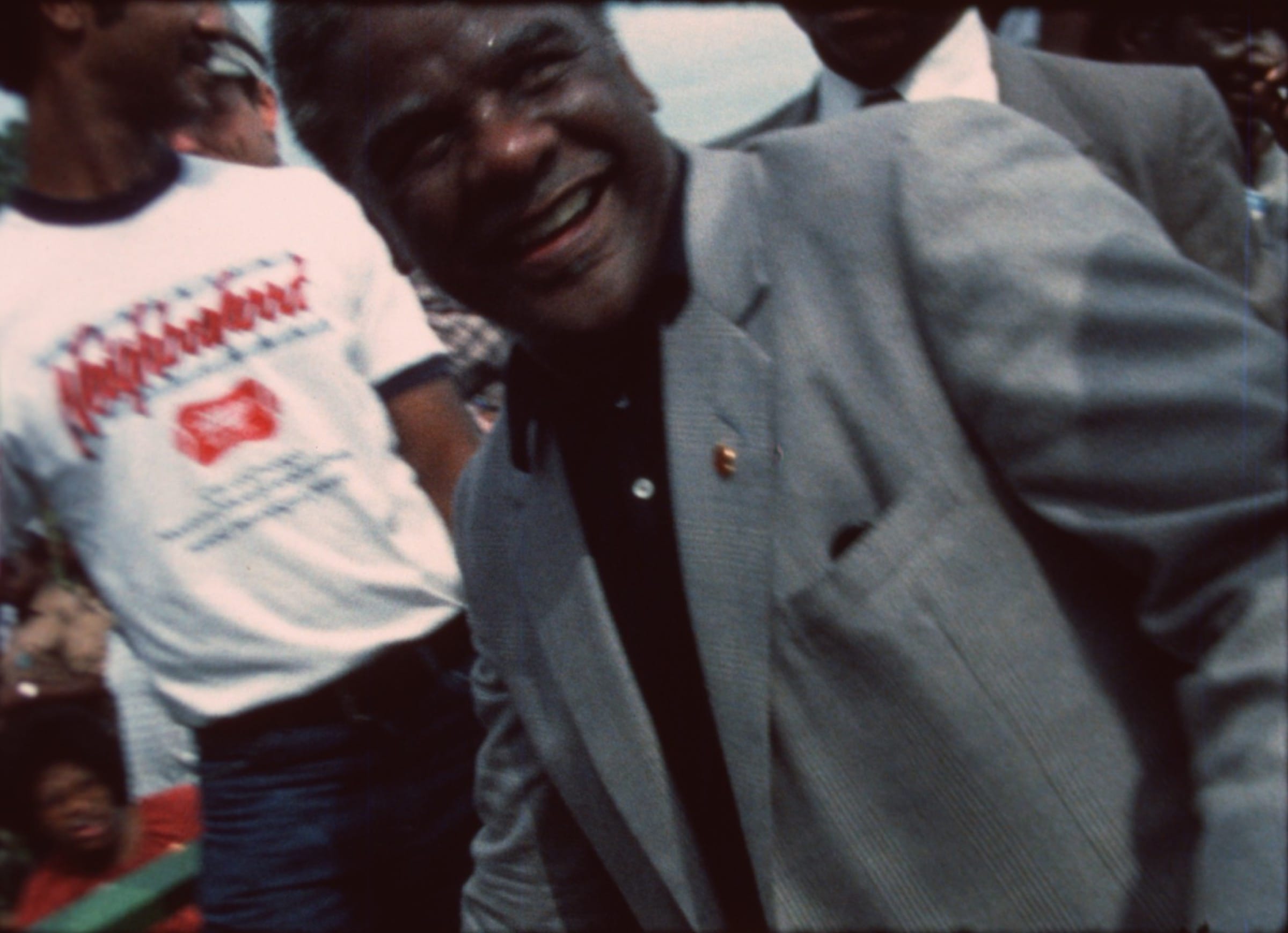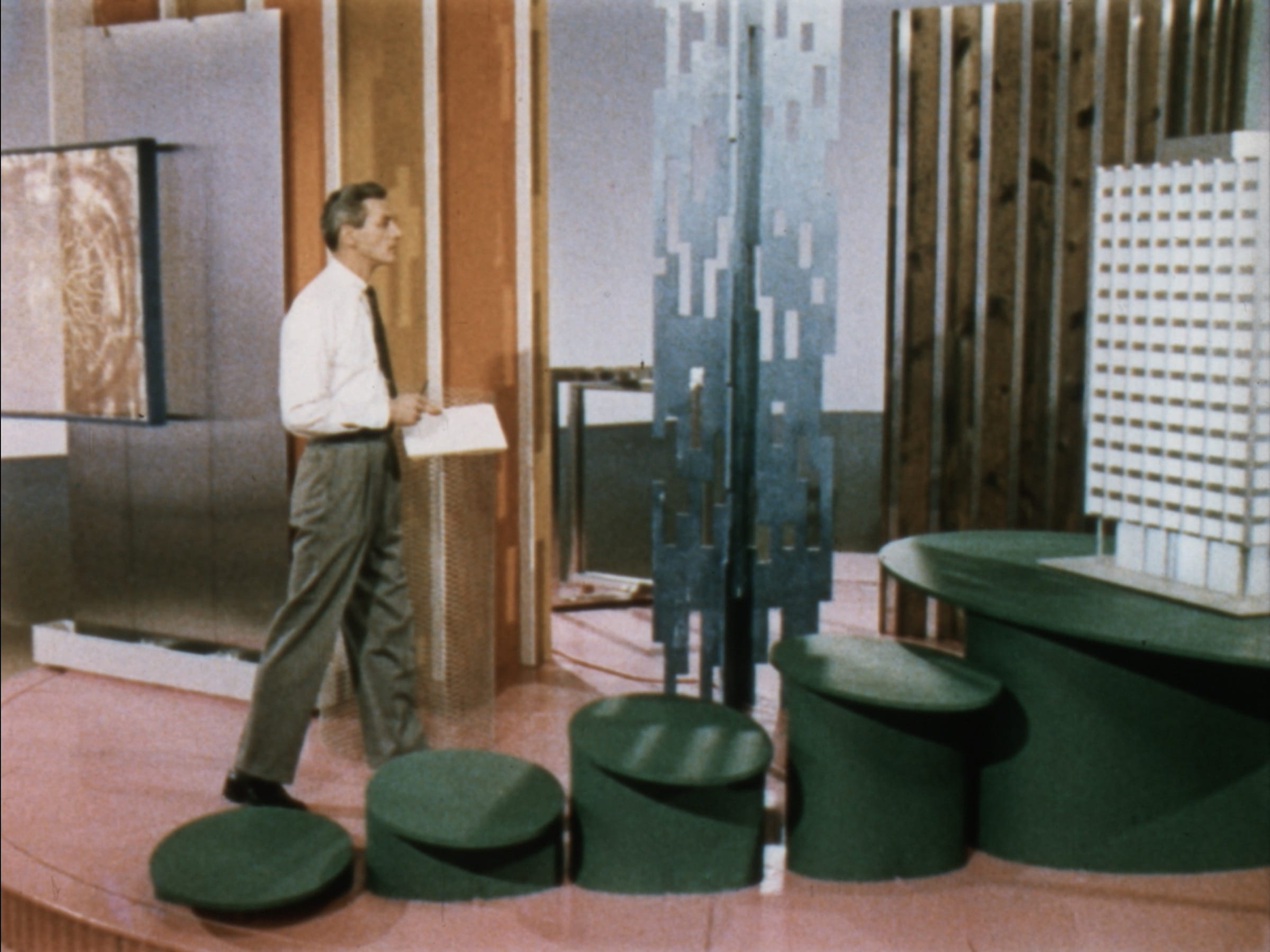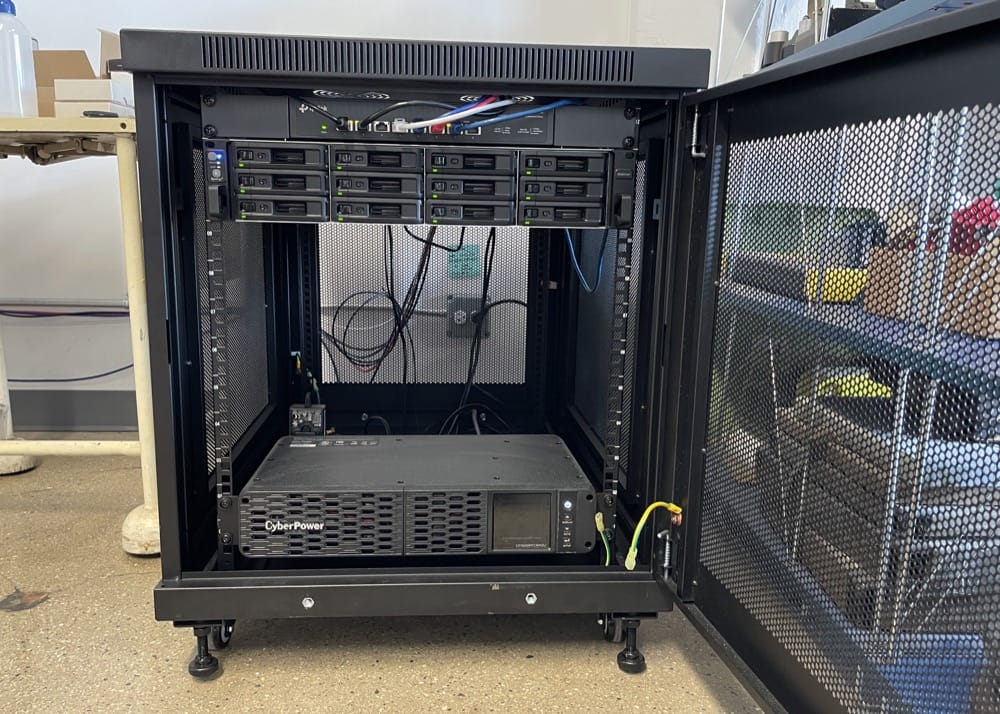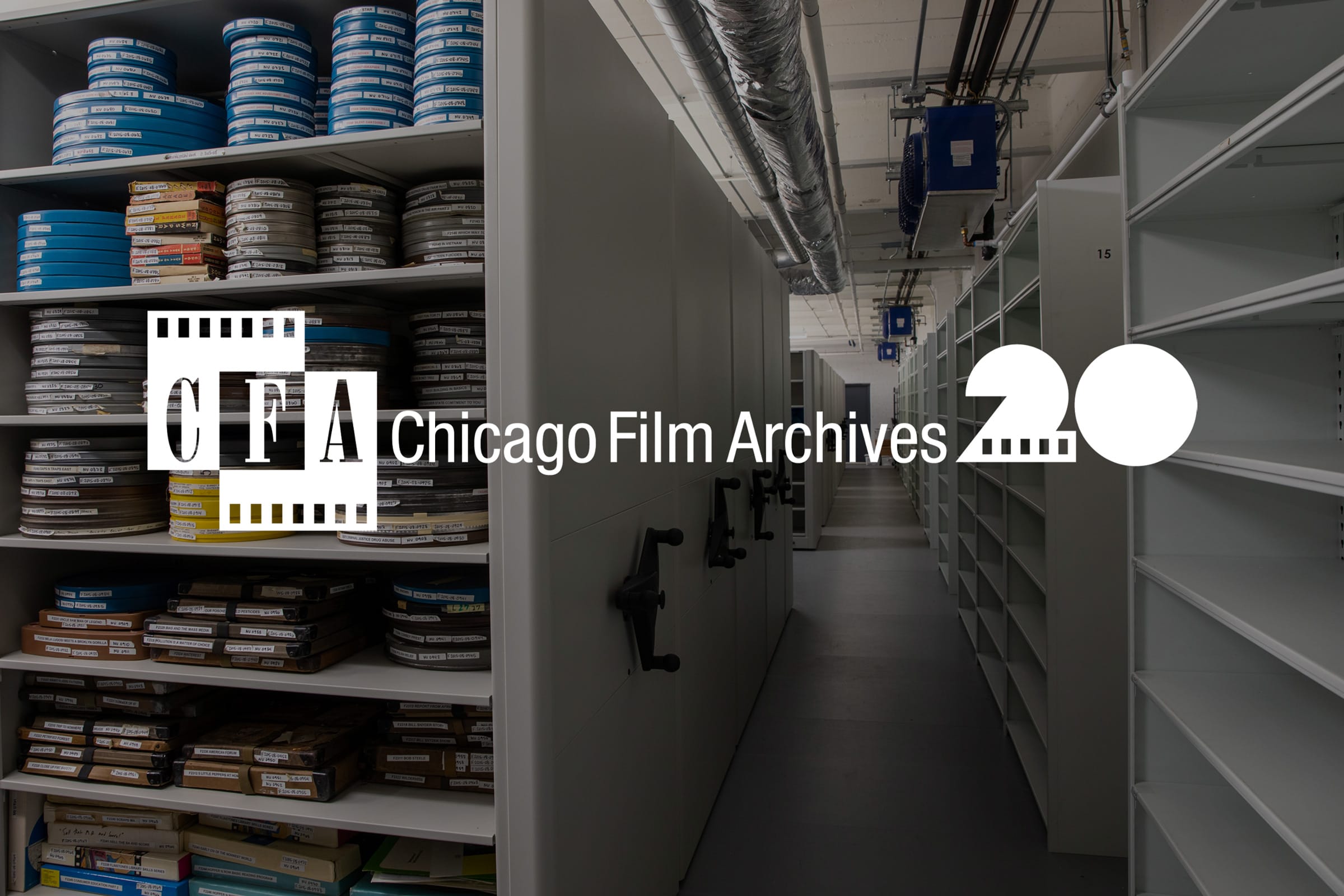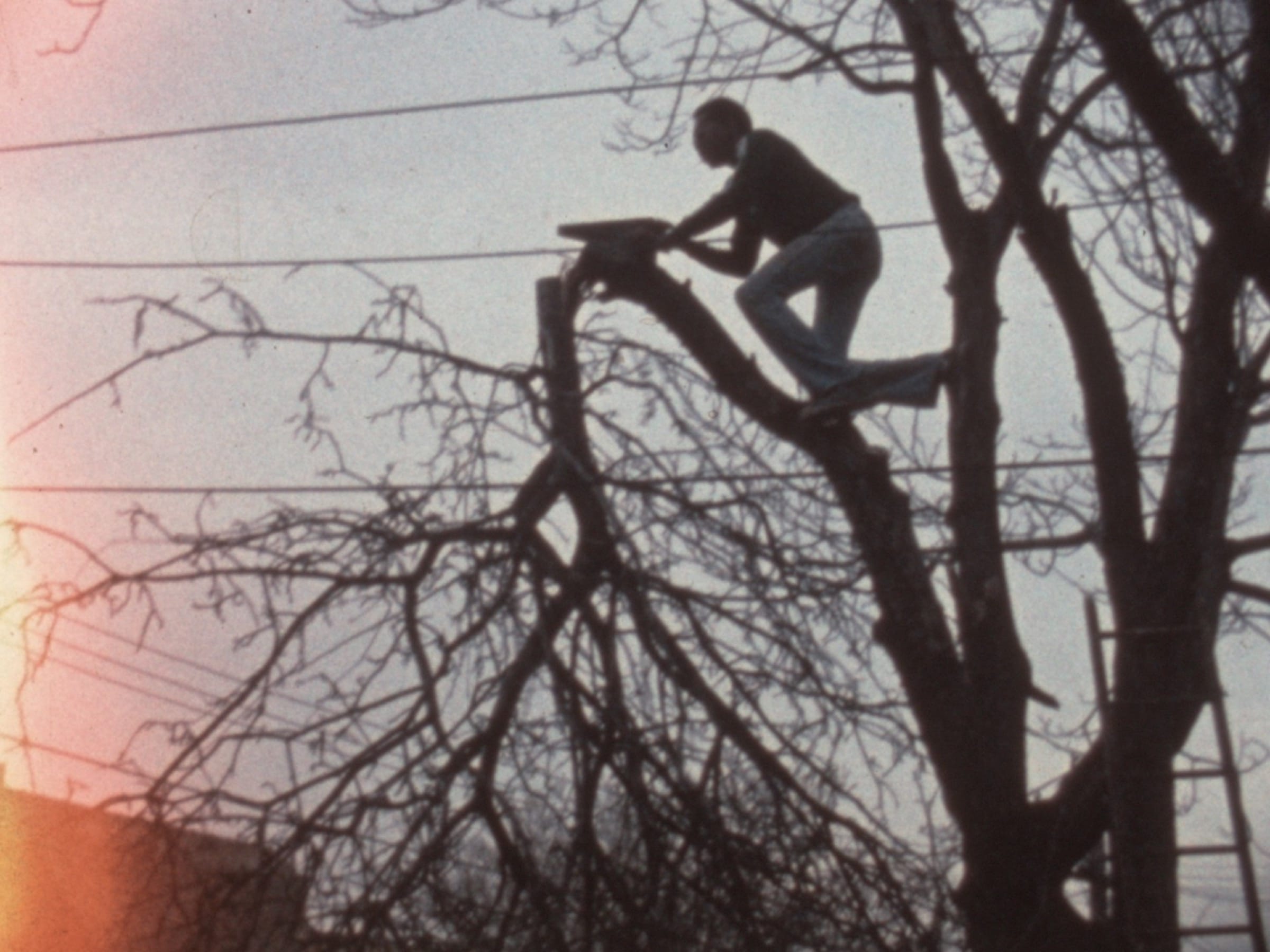At CFA we celebrate ladies all year long, but days like International Women’s Day give us a great excuse to further celebrate the abundance of inspiring women associated with our collections – Katharine Bowden (an early graduate of Valporaiso University), Margaret Conneely (amateur movie-maker extraordinaire), Sylvia Davis (producer of an early 1950s Chicago WBKB-TV wrestling show), Terry Davis (international travelogue filmmaker), JoAnn Elam (activist and feminist filmmaker), Millie Goldsholl (head of the film department at Goldsholl Design and Film Associates), Evelyn Kibar (our favorite amateur film protagonist), Helen Morrison (photographer and filmmaker), Ruth Page (choreographer named by the Dance Heritage Coalition as one of America’s 100 Irreplaceable Dance Treasures), Sybil Shearer (modern dancer and choreographer) and the countless uncredited women affiliated with our collections. Days like IWD also encourage us to celebrate…us – a women run organization (it’s nice to set aside some time to celebrate ourselves, right?!).
We invite you to explore the collections these women were a part of. Follow the bold links to see each collection’s finding aid (some with streaming video!):
Charles and Katharine Bowden Collection
Katharine Ertz-Bowden was an early graduate of Valparaiso University in Indiana. In 1897 she earned a Diploma in Public Speaking with a BA in Science from Valparaiso. A few years later she married fellow graduate Charles L. Bowden who had been an “expert photographer with Eastman Kodak,” and together they organized the two-hour film and lantern slide lecture A Pictorial Story of Hiawatha. The Bowden’s lecture included the screening of a Longfellow inspired pageant performed in Desbarats, Ontario by the Garden River Ojibway community in 1902 – 1903. From the spring of 1904 until 1910, the Bowdens presented the lecture in over twenty states to tens of thousands of spectators at small town opera halls, churches, school auditoriums, and under the expansive tents raised for summer Chautauquas. Our Charles and Katherine Bowden Collection contains the preserved and restored archival materials from 7 original 35mm nitrate reels discovered in the Valparaiso University Special Collections Library by Judith Miller.
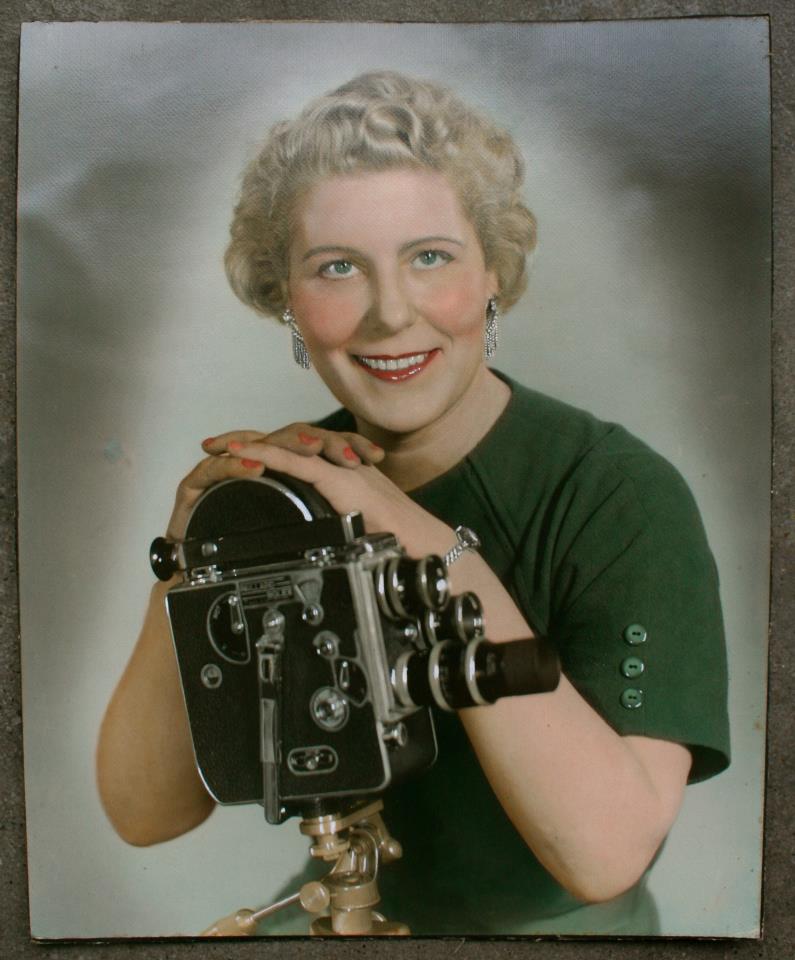
Chicago movie-maker Margaret Conneely (1915-2007) was active in amateur filmmaking both locally and internationally for nearly half a century. In the 1950s, Margaret’s films won awards from major amateur contests in both America and Europe, and by the 60s she had become a highly regarded competition judge, attending amateur film festivals around the world. She wrote articles on amateur film that appeared in local club newsletters, the Journal of the Photographic Society of America (PSA) and even the New York Times. Margaret was also the staff cinemetographer at Loyola University Medical School, and assisted on numerous film productions for the school (our favorite being, Student Life at Loyola University Medical School). Margaret’s films are fanciful looks at family life as women’s rights and the first stirrings of the sexual revolution complicated by traditional expectations of wifely duties. Highlights from her collection include The 45, Chicago: The City to See in ’63, The Fairy Princess, and Mister E (all streamable on our site!).
Robert & Theresa Davis Collection
Terry and her husband Robert filmed international and domestic travelogues from the late 1940s until the 1990s. Their films featured distant sites set in Iceland, Thailand, Belgium, Ireland, Tunisia, Australia, New Zealand, Yugoslavia and Sicily. Sadly, Terry passed away in October 2012 before we could conduct an in-depth interview about her life and times as a travelogue filmmaker. In the brief time that we knew Terry, she inspired us with her stories – a notable one being Terry’s solo bike ride (with camera in hand!) across Europe after her WWII tour of duty in the Women’s Army Corps. With the assistance of her nephew, we are gathering more information about Terry, her husband and the films they made.
Russ & Sylvia Davis Collection
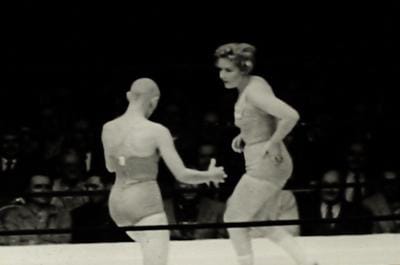
“Yulie Brynner vs Rose Roman” from the Russ & Sylvia Davis Collection
Sylvia H. Carlson, was born in Goteberg, Sweden around the mid teens of the Twentieth century. She moved with her family to San Francisco in 1930. By 1937 she was in charge of the beauty shop in the Russ Building. She met her future husband, Russ Davis, there in 1946. They were quickly married and she moved to Chicago where Russ had lived since the late 1930s.
Sylvia began to work behind the scenes on Russ’ television shows. In 1948 she was co-producer of his amateur talent show on WBKB, The Knickerbocker Hour. In 1949 Russ and Sylvia started IWF, Inc, a television film production company, with Sylvia acting as president and producer. The company, called both International Wrestling Films and Imperial World Films, mainly created a syndicated wrestling show, but also made sponsored films and a short run TV series with Raymond Massey. The Davis’ 1950s syndicated wrestling television show featured wrestlers such as Verne Gagne, Gorgeous George, and Lou Thesz.
Ron Doerring Collection (Evelyn Kibar)
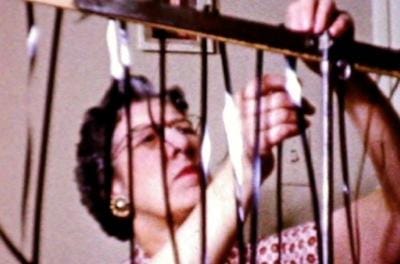
Evelyn Kibar in “This Is a Hobby?”
John and Evelyn Kibar were a husband and wife amateur filmmaking team that shot and starred in their own productions (Evelyn’s screen presence as the annoyed wife has delighted us for years now). The Kibars lived in Racine, Wisconsin and were members of amateur cinema groups including the Kenosha Movie Makers (also known as the Kenosha Movie and Slide Club and the Kenosha Camera Club), Society of Amateur Cinematographers, PSA, and Ra-Ciné Movie and Slide Club. They began making films together in the 1930s, and were frequent visitors, presenters, judges and winners in both photographic slide and film competitions in Chicago and Milwaukee. The Kibars’ films were award-winning creative collaborations and often included audio accompaniment on tape. Their 1946 film “Autumn Glory,” won an honorable mention in the Amateur Cinema League’s annual “Ten Best Contest” that year.
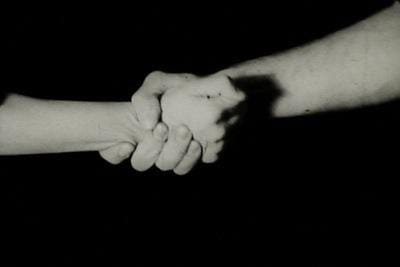
Rape, JoAnn Elam, 1975
JoAnn Elam (1949-2009) is a central figure in the in the history of Chicago’s experimental film community and one of the founders of Chicago Filmmakers. Her short experimental and documentary films capture the spirit and ethos of a politically active, feminist, and socially conscious artist.
Elam primarily shot on 8mm film, although she did work extensively with 16mm, Super-8mm film and early video. Elam’s 8mm films often documented aspects of her everyday life and local events ranging from the Palmer Square Art Fair in the 1970s to the Blizzard of ’79. She shot a number of reels of 8mm film while she was living in San Francisco in the summer of 1967, and during her time at Antioch College and in Yellow Springs, Ohio. Elam’s most well known 16mm films, Rape (1975) and Lie Back and Enjoy It (1982) are probing feminist examinations of sexual assault and the representation of women. Both films (streamable on our site!) utilize experimental techniques in order to call into question the way in which women are depicted on screen. These two films are referenced in numerous texts on documentary and feminist cinema, and are fascinating examples of Elam’s interest in merging radical form and technique with radical political content.
Elam’s unfinished project, Everyday People (1979-1990), is based on her experiences as a letter carrier for the US Postal Service in Chicago, the various people she met while on the job, the political struggles they faced with the administration and the union, and larger issues related to the history of labor struggle and activism in the United States. Elam’s notes and journals for the film, as well as the approximately 250 film, video and audio elements associated with it, reside at CFA and provide an unparalleled level of access to her creative process, political and artistic ideas, and the practical, economic, and ethical issues that impacted her work as an independent artist and filmmaker.
Mort & Millie Goldsholl Collection
Millie Goldsholl (1920-2012) was the head of the Film Department at Goldsholl Design and Film Associates (another notable female, Susan Keig, headed the Design Department), one of Chicago’s leading graphic design studios in the 1950s. The studio became recognized for their animations, progressive hiring practices and developing corporate branding packages for various companies. Our Mort & Millie Goldsholl collection contains commercials and industrial films that Goldsholl Design and Film Associates made for their clients, experimental films and animations made by both Morton and Millie, unedited travel films shot by Morton and Millie and films (primarily animated) that the two collected over the years. Millie’s films are among our favorites here at CFA. An early student of the Chicago School of Design (now IIT), Millie created films that are expressions of Maholy Nagy’s vision of industry, art and design. They are playful, human and profound all at once. The same thing, of course, can be said of Millie.
Here is Millie talking about the School of Design (taken from a 2007 interview between Millie and CFA’s Executive Director, Nancy Watrous).
Morrison-Shearer Collection (Helen Morrison & Sybil Shearer)
CFA has been honored to house and mange the Morrison-Shearer Collection for the Morrison-Shearer Foundation since 2008. This extensive collection of dance films, most of which were shot by Helen Balfour Morrison, features solo performances by Sybil Shearer, Shearer with her dance company, interviews with Sybil Shearer and some rehearsal footage.
Helen Balfour Morrison (1901-1984) was born in Evanston, Illinois, the daughter of Fannie Lindley and Alexander Balfour, an engineer and a proud, aristocratic Scotsman. When Helen was 17, her mother died, and Helen took a job in a photography studio to help support the family. At this studio she learned to use the portrait camera and helped expand the studio’s business with creative ideas of her own. In the 1930s, Helen Balfour Morrison embarked upon a personal photography project – the Great Americans series. She photographed some 200 notable personalities including Robert Frost, Helen Hayes, Nelson Algren, Frank Lloyd Wright, Alice B. Toklas and Gertrude Stein, Mies van der Rohe, Amelia Earhart, Jane Addams, and Saul Bellow. Most of these portrait sessions took place in Chicago or in New York and were exhibited widely in museums throughout the country. In 1942, Morrison met Sybil Shearer, and although her portrait work and exhibitions of the Great Americans continued, her attention gradually shifted to Sybil as her primary subject. She finally abandoned the Great Americans series in 1945. Her collaboration with Sybil Shearer produced a large collection of extraordinary dance photographs and films, as well as an intense and sensitive documentation of the life of this artist. Today her extensive portfolio remains largely unpublished and unknown. In a real sense she sacrificed her own career to promote that of Sybil. Besides designing the lighting, Helen took over the complete management of Sybil’s publicity, performances, travel arrangements, and hospitality. She experimented with the role of impresario, presenting dancer Ruth St. Denis in 1946 and both dancer Eleanor King and sculptor Richard Lippold in 1948. In 1949 she conceived a short-lived series of programs which she called “Rondo,” presenting other artists, including Uta Hagan, Merce Cunningham, pianist William Masselos, and Frank Lloyd Wright. In later years she made films to record Sybil’s dances, and made one artistic film of her own.
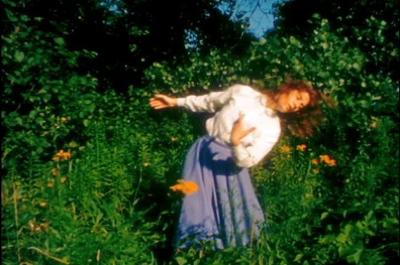
Sybil Shearer
Sybil Shearer burst upon the modern dance scene in October 1941 in a solo debut at Carnegie Hall that received rave reviews and an award from critic John Martin as the year’s most promising solo choreographer. Already setting a radical new direction in modern dance, she came to believe that New York was no place to develop dance as an art. In 1942 she left for the new Roosevelt College in Chicago, where she was given the freedom to work independently, close to nature, and in her own unorthodox way. Within a month of her arrival, she met Helen Balfour Morrison. Thus began a career of one of the finest dancers of the 20th century, though deemed “elusive,” and “rarely seen.” Shearer formed the Morrison-Shearer Foundation in 1991 to perpetuate their artistic legacy. Under the auspices of the Foundation, she brought Susanne Linke, the German expressionist dancer, to Chicago in 1991 to perform at the Harold Washington Library. In 1993 she arranged a tour to Germany for the 20th anniversary of the Hamburg Ballet, whose director, John Neumeier, had been a member of the Sybil Shearer Company in the 1960s. In February 2005 she danced publicly for the last time at the Art Institute of Chicago, interpreting Matisse in the “Artists and Dance” program, just nine months before her death at the age of 93.
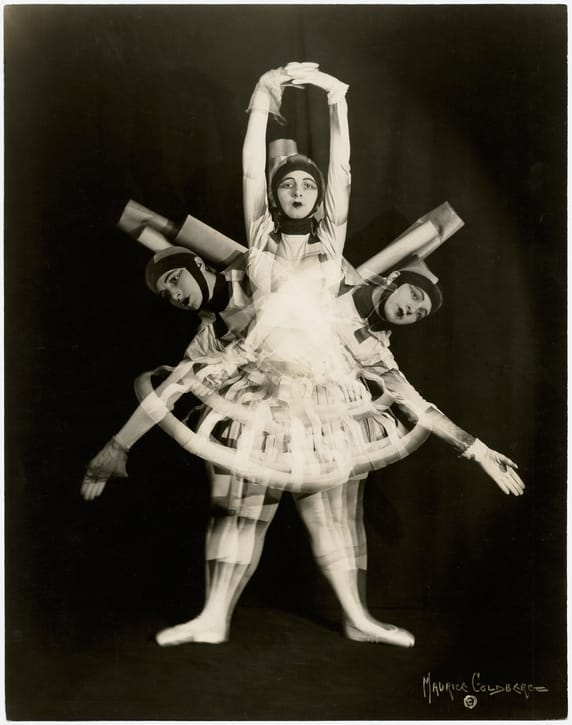
Ruth Page (photo courtesy of the Dance Heritage Coalition)
Dancer, choreographer, company director, and pioneering Chicago dance figure for over half a century, Ruth Page (1899-1991), was born in Indianapolis. She studied fancy dancing with Anna Stanton and ballet with Elizabetta Menzeli, made her professional debut on Broadway, then toured South America with Anna Pavlova. During the 1920s Page worked closely with Adolph Bolm, starring in his productions for Chicago Allied Arts and choreographing her first successful dances for its repertory.
Settling in Chicago, she became premiere danseuse of the Ravinia Opera. In the 1930s, in partnership with Bentley Stone, she created Frankie and Johnny (1938) and several other Americana ballets, most to commissioned scores by American composers; she also worked with Katherine Dunham and Harald Kreutzberg, exploring a broad range of expression. In the following decades she created a number of works inspired by operas, founded the Chicago Opera Ballet, and formed the Ruth Page Foundation for Dance, a school she co-directed with Larry Long. Sophisticated, open-minded, and energetic, she gave opportunities and exposure to countless American and international dance artists. (From the Dance Heritage Coalition)



